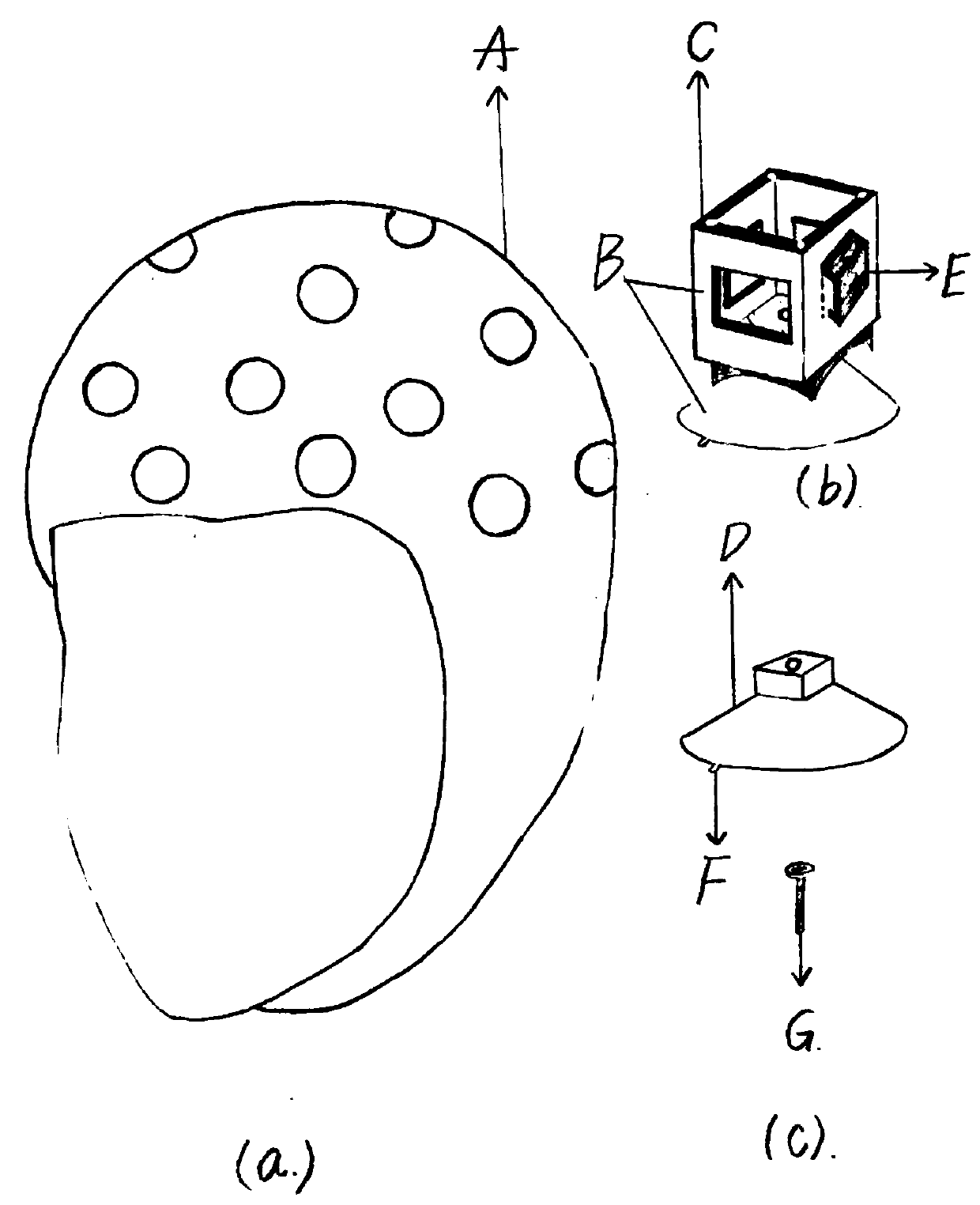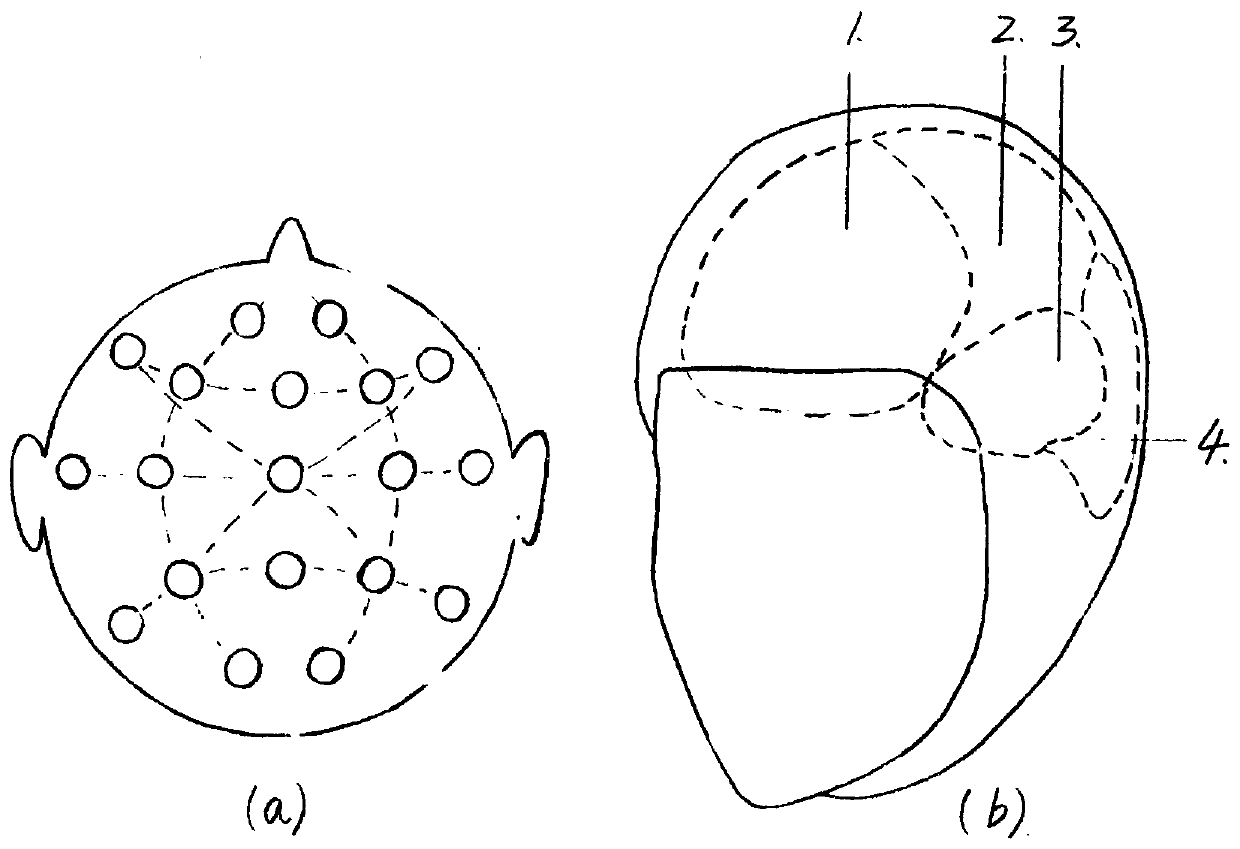Sucked type wearable flexible MEG cap for measuring human brain magnetic field signals
A magnetic field signal, sucker-type technology, applied in the field of biomedical engineering, can solve the problems of reducing the detection cost, high cost, limiting the scope of equipment use, etc., to achieve the effect of reducing the detection cost
- Summary
- Abstract
- Description
- Claims
- Application Information
AI Technical Summary
Problems solved by technology
Method used
Image
Examples
Embodiment 1
[0025] figure 1 It is a structural diagram of a specific embodiment of a suction cup-type wearable flexible magnetic brain cap for measuring magnetic field signals of the human brain.
[0026] In this example, if figure 1 As shown in (a), a sucker-type wearable flexible magnetic brain cap for measuring the magnetic field signal of the human brain includes a flexible cap body A and a sucker-type card slot B; the sucker-type card slot B includes a card slot C , the suction cup D and the fixing bolt G, and the fixing bolt G is used to connect the card slot C and the sucker D; the card slot C is designed as a cuboid according to the shape of the ultra-weak magnetic measurement sensor at the fetesla level, and one side of the card slot C is designed with an oblique The take-up slot E with one end half-opened at the bottom, the inclination angle range is 30 degrees to 45 degrees, the size of the take-up slot E is determined by the peripheral circuit of the extremely weak magnetic m...
Embodiment 2
[0028] figure 2 It is a grid magnetoencephalogram of a suction cup-type wearable flexible magnetoencephalogram for measuring magnetic field signals in the human brain.
[0029] In this example, if figure 2 As shown, the flexible cap A is made of 4 models based on the standard human head model, corresponding to underage males and females, adult males and females respectively, and can adapt to multiple human head sizes in a wider range, greatly reducing the detection rate in practical applications. Cost; the surface of the flexible cap body A adopts the internationally accepted 10-20 standard EEG acquisition lead system and the physiological structure and functional partitions of the human brain, and draws the grid magnetoencephalogram of the suction cup type card slot B arranged in an array, Such as figure 2 As shown in (a) and (b), in (b), the numbers 1, 2, 3, and 4 represent frontal lobe area 1, parietal lobe area 2, temporal lobe area 3, and occipital lobe area 4, respe...
Embodiment 3
[0031] In this embodiment, the flexible cap A is made of heat-insulating silica gel, which has good elasticity and high adhesion to the head. Compared with the use of SQUID, the minimum distance between the surface of the human scalp and the sensor is 3 to 6 cm. , There is a test distance of 2 to 3 cm between the sensor on the 3D printed helmet and the human scalp, and the magnetocap can be as close to the subject's scalp as possible to ensure that the distance between the sensor inserted into the suction cup slot B and the subject's real scalp is the smallest; the suction cup The direction of the suction cup slot B at a position on the flexible cap A can also be flexibly adjusted. When measuring the magnetic field of the whole brain, multiple suction cup slots B are adsorbed on the flexible cap A, and the peripheral circuits of the suction cup slot B will be Many, combined with the orientation of the side of the drawer card slot E, adjust the direction of the suction cup card ...
PUM
 Login to View More
Login to View More Abstract
Description
Claims
Application Information
 Login to View More
Login to View More - R&D
- Intellectual Property
- Life Sciences
- Materials
- Tech Scout
- Unparalleled Data Quality
- Higher Quality Content
- 60% Fewer Hallucinations
Browse by: Latest US Patents, China's latest patents, Technical Efficacy Thesaurus, Application Domain, Technology Topic, Popular Technical Reports.
© 2025 PatSnap. All rights reserved.Legal|Privacy policy|Modern Slavery Act Transparency Statement|Sitemap|About US| Contact US: help@patsnap.com


